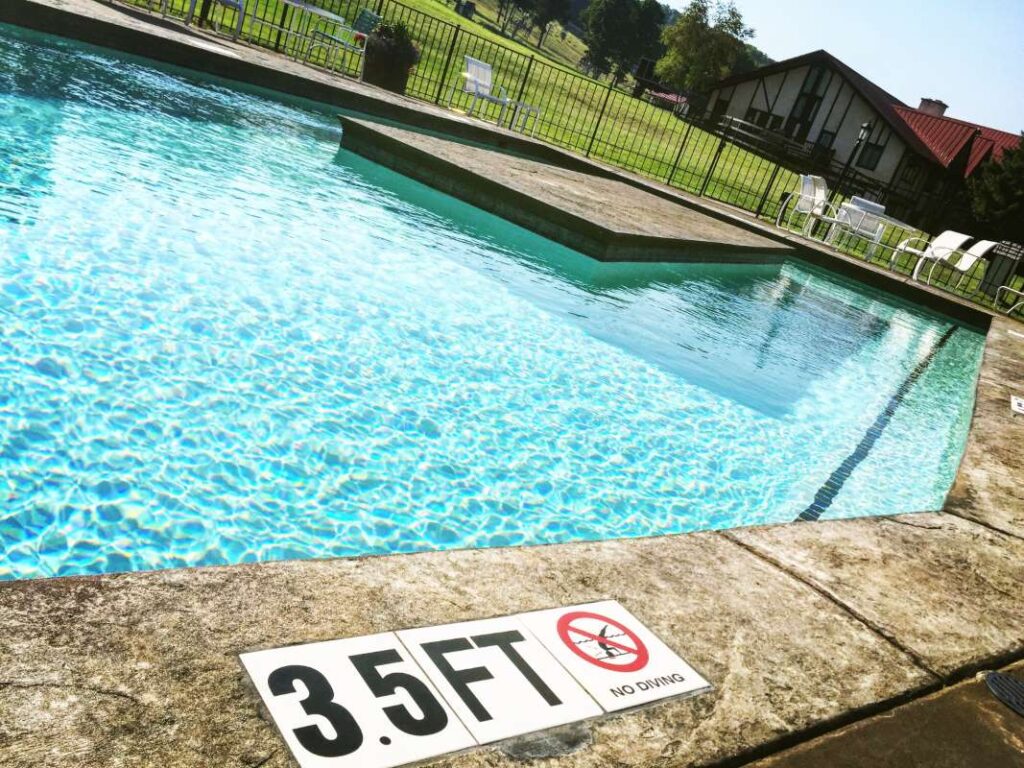Arizona’s Water-Saving Innovations: Adapting to a Desert Landscape
Explore Arizona’s innovative water-saving techniques that are transforming its desert landscape and ensuring sustainable water use in the region.
Arizona, known for its stunning deserts and vibrant landscapes, faces significant challenges when it comes to water conservation. With a population that’s rapidly growing and climate conditions that are becoming increasingly unpredictable, the state has had to innovate to ensure a sustainable water supply. This blog post will delve into the various water-saving innovations being implemented across Arizona, their implications for residents and businesses, and how they’re paving the way for a more sustainable future. From advanced irrigation techniques to community initiatives, discover how Arizona is adapting to its desert landscape.
The Importance of Water Conservation in Arizona
Water is a precious resource in Arizona, primarily due to its arid climate and a population that relies heavily on agriculture and urban development. As the state grapples with long-term drought conditions and fluctuating precipitation levels, understanding the significance of water conservation becomes paramount.
- Population Growth: Arizona’s population has been steadily increasing, putting additional pressure on already limited water resources. According to the Arizona Department of Water Resources, the state is projected to grow by millions in the coming years.
- Climate Change: Rising temperatures and prolonged droughts exacerbate water scarcity, prompting the need for innovative solutions to manage this vital resource.
- Agricultural Demands: Agriculture accounts for a significant portion of Arizona’s water usage, making efficient irrigation methods crucial to sustain farming without depleting reserves.
These factors highlight the need for sustainable water practices that benefit both the environment and the community. As we explore Arizona’s water-saving innovations, it becomes clear that collaboration between government agencies, businesses, and individuals is key to securing the state’s water future.
Innovative Irrigation Technologies
One of the most effective ways Arizona is adapting to its desert landscape is through the adoption of advanced irrigation technologies. These systems are designed to minimize water waste while maximizing efficiency. Here are some notable examples:
- Drip Irrigation: Widely used in agriculture, drip irrigation delivers water directly to the roots of plants through a network of tubing and emitters. This method conserves water by reducing evaporation and runoff, allowing farmers to use significantly less water while still maintaining high crop yields.
- Smart Irrigation Controllers: These devices use weather data and soil moisture levels to optimize watering schedules. By adjusting irrigation based on real-time conditions, smart controllers help homeowners and farmers avoid overwatering, further reducing water consumption.
- Soil Moisture Sensors: These sensors measure the moisture content in the soil and provide critical data to inform irrigation decisions. By ensuring that water is only applied when necessary, these sensors can help conserve water and improve plant health.
As these technologies become more accessible, they play a crucial role in helping Arizona manage its water resources more effectively, reinforcing the importance of sustainable agricultural practices.
Community-Wide Water Conservation Programs
In addition to technological advancements, community-driven initiatives are essential to Arizona’s water-saving efforts. Several programs aim to educate residents about water conservation while offering practical solutions to reduce overall water usage:
- Water Conservation Education: Organizations such as the Arizona Project WET (Water Education for Teachers) provide resources and training for teachers to educate their students about the importance of water conservation. By fostering awareness from a young age, these programs aim to build a culture of conservation.
- Rebates for Water-Saving Appliances: Many municipalities in Arizona offer rebates for residents who install water-efficient fixtures such as low-flow toilets and smart irrigation systems. These incentives encourage homeowners to upgrade their appliances, ultimately leading to significant water savings.
- Rainwater Harvesting Initiatives: Collecting rainwater is an effective way to supplement water supplies. Local governments are promoting rainwater harvesting through workshops and grants that help residents install cisterns to capture and store rainwater for irrigation and other non-potable uses.
These community-focused conservation programs not only help reduce water consumption but also foster a sense of responsibility among residents toward sustainable water management.
Desert Landscaping: Xeriscaping Techniques
Another innovative approach to water conservation in Arizona is the implementation of xeriscaping, a landscaping philosophy that minimizes water use. By selecting drought-resistant plants and utilizing efficient landscaping techniques, homeowners can create beautiful outdoor spaces that require minimal irrigation:
- Native Plant Selection: Utilizing native plants that are well-adapted to Arizona’s climate can significantly reduce water needs. These plants require less irrigation and are more resilient to local pests and diseases.
- Mulching: Applying mulch around plants helps retain moisture in the soil and reduces evaporation. It also suppresses weeds, which can compete for water and nutrients.
- Efficient Irrigation Systems: Incorporating drip irrigation systems into xeriscaped gardens ensures that water is delivered directly to the plants’ roots, optimizing water usage further.
Xeriscaping not only conserves water but also enhances the aesthetic appeal of properties, making it an attractive option for homeowners across the state.
Public Policy and Regulatory Frameworks
The government plays a crucial role in promoting water conservation through supportive policies and regulations. Arizona’s laws and initiatives are designed to facilitate sustainable water usage and encourage innovations in the sector:
- Arizona’s Drought Contingency Plan: This comprehensive plan outlines strategies for managing water resources during drought conditions, including conservation measures, water storage, and collaboration with neighboring states.
- Active Management Areas (AMAs): Arizona has designated specific areas as AMAs where strict regulations are in place to manage groundwater use. These regulations help ensure that water is used sustainably and that aquifers are protected.
- Incentives for Water-Saving Technologies: State and local governments often provide financial incentives for businesses and homeowners to adopt water-saving technologies. This support fosters innovation and encourages the adoption of best practices across the region.
These policies not only drive the development of innovative water-saving technologies but also ensure that residents have the resources necessary to implement them effectively.
The Role of Businesses in Water Conservation
Businesses in Arizona are increasingly recognizing the importance of water conservation and are taking proactive steps to reduce their water footprint. From manufacturing to hospitality, companies are embracing sustainability:
- Water Efficiency Audits: Many businesses are conducting audits to assess their water usage and identify areas for improvement. These audits help organizations implement targeted strategies that can result in significant water savings.
- Employee Training Programs: Training employees on water conservation practices can create a culture of sustainability within organizations. By encouraging staff to adopt water-saving habits, businesses can reduce overall consumption.
- Partnerships with Local Agencies: Collaborating with local water management agencies allows businesses to access resources and support for implementing water-saving technologies and practices.
Incorporating water conservation into business operations not only benefits the environment but can also enhance a company’s reputation and bottom line.
Future Trends in Water Conservation
As Arizona continues to face challenges related to water scarcity, several emerging trends are expected to shape the future of water conservation in the state:
- Smart Water Management Systems: The integration of IoT (Internet of Things) devices into water management systems will enable real-time data collection and analysis, enhancing decision-making processes for water usage.
- Increased Focus on Renewable Water Sources: The exploration of alternative water sources, such as treated wastewater and desalination, may provide additional solutions to meet the growing demand for water.
- Community-Based Initiatives: Grassroots movements and community-led conservation initiatives are likely to gain momentum, empowering local residents to take charge of their water resources.
These trends indicate that Arizona is on a path toward a more sustainable future, where collaboration, innovation, and community engagement play pivotal roles in water conservation efforts.
Conclusion
Arizona’s journey toward water conservation is a testament to the power of innovation, collaboration, and education. By implementing advanced technologies, fostering community initiatives, and developing supportive policies, the state is making significant strides in adapting to its desert landscape. The collective efforts of residents, businesses, and government agencies demonstrate that sustainable water management is not just a necessity but an achievable goal. As we move forward, it’s essential to continue embracing these innovations and practices to ensure a secure water future for Arizona. Together, we can pave the way for a sustainable tomorrow.
If you’re interested in diving deeper into sustainable practices or looking for pool routes for sale in Arizona, explore opportunities with Superior Pool Routes and join the movement towards efficient resource management.



